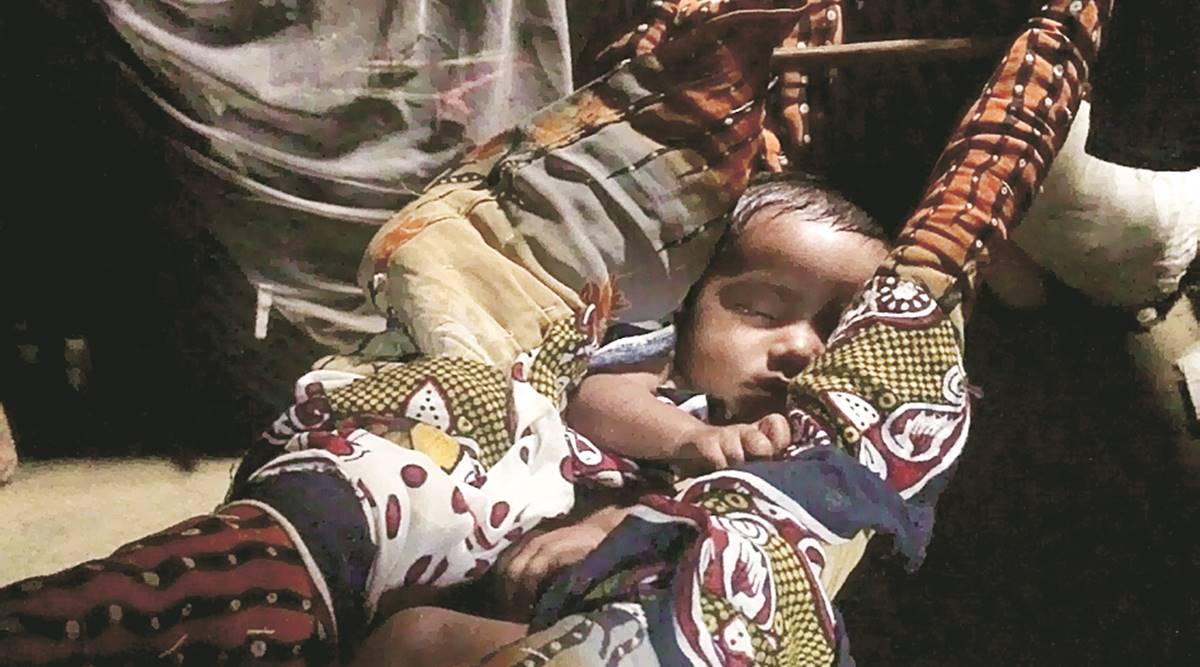 Also worth mentioning is the persistence of a huge rural-urban disparity in stunting in many states, notably in Meghalaya, Andhra Pradesh, Gujarat and Sikkim (over 10 percentage points).
Also worth mentioning is the persistence of a huge rural-urban disparity in stunting in many states, notably in Meghalaya, Andhra Pradesh, Gujarat and Sikkim (over 10 percentage points). Did child undernutrition in India worsen during the COVID-19 pandemic? The consensus is: yes, most likely. But did we do well in reducing child undernutrition before the lockdown? Surprisingly, the answer is “no”. That child undernutrition in India had begun worsening well before the pandemic is one of the poignant takeaways from the just released key indicators from the first phase of the National Family Health Survey-5 (NFHS-5). This is, indeed, a cause for serious concern for a variety of reasons.
The first phase of NFHS-5, held during 2019-2020, covered 17 states and five Union territories. These include four states from the south (Andhra Pradesh, Karnataka, Kerala and Telangana), three from the west (Goa, Gujarat and Maharashtra), two from the east (Bihar and West Bengal), one from the north (Himachal Pradesh) and the rest from the Northeast (Assam, Manipur, Meghalaya, Mizoram, Nagaland, Sikkim and Tripura).
Of these 17 states, stunting in children under five years has gone up in 11 states to a varying degree, but significantly more in Tripura (8 percentage points), Goa and Telangana (5 percentage points) between 2015-16 and 2019-20. It remains almost the same in the three large states of Andhra Pradesh, Karnataka and Assam. Only three states (Sikkim, Manipur and Bihar) were an exception with a decline being observed.
A disquieting revelation from the survey is that southern states have joined the league of poor performing states. Stunting has risen in Kerala and Telangana, followed by just a minor decline in Andhra Pradesh and Karnataka. Also worth mentioning is the persistence of a huge rural-urban disparity in stunting in many states, notably in Meghalaya, Andhra Pradesh, Gujarat and Sikkim (over 10 percentage points).
Is this likely to be a temporary trend? A comparison with the results of the Comprehensive National Nutrition Survey (CNNS), held in 2016-18, reveals that 10 out of these 11 states had either a negative or subpar performance in stunting. The worsening of child stunting in these states, thus, appears to be a rather sustained phenomenon.
Almost a similar pattern appears in the underweight category: Eleven states registered an increase in this metric. What’s more, stunting has gone up in 10 out of 11 states where the number of underweight children surged. While it has declined marginally in four states, there is hardly any improvement in other two states. In wasting, nine states witnessed an increase, whereas five states registered paltry or no progress in the last four years. Only three states, Karnataka, Meghalaya and Goa, registered a noteworthy decline in wasting.
To put it differently, at least one aspect of child undernutrition has gone up in 14 out of 17 states. Additionally, both stunting and underweight increased in eight states, whereas stunting and wasting increased in six states. In five states (Himachal Pradesh, Mizoram, Nagaland, Telangana and Tripura), all the three aspects of child undernutrition increased.
To be sure, the above patterns in 17 states cannot be generalised for the entire country. However, it is equally important not to lose sight of the larger phenomenon of a possible reversal of the progress on child undernutrition, especially in stunting.
What is primarily responsible for such a sustained regressive trajectory? A definitive diagnosis demands a detailed, careful scrutiny of data, as a cursory look at some of the associated factors reveals a conflicting picture. For instance, access to sanitation and safe drinking water has improved significantly in states where stunting has increased. Conversely, anaemia among children has gone up sharply in most of these states. Also, maternal anaemia has either increased or remained the same. Equally important, the proportion of children (6-23 months) who received an adequate diet remains low without a significant improvement.
Two observations merit a mention. First, NFHS-5 was carried out in these states at a time when India’s economy was decelerating steadily, followed by reports of rising joblessness and food insecurity. The survey won’t be able to clearly inform how and to what extent these factors have contributed to the worsening of child undernutrition. Two, the existing policy approach on food security in general and agriculture policy, in particular, which promotes a few crops at the expense of nutri-cereals, calls for a careful scrutiny, especially given the need to counter the high prevalence of anaemia. This assumes centrality and immediacy at this point of time.
The worsening of child undernutrition well before — and possibly after — COVID-19 is a grim reminder of the state of a critically important aspect of human development. This calls for immediate and decisive course correction, including a critical assessment of the reach and efficacy of the existing nutrition centric programmes. The dismal performance of southern states despite their robust welfare architecture makes this urgent. A complacent approach that assumes that all necessary measures, including the Poshan Abhiyan, are in place and the reversal in progress is only momentary will be a sure way to inflict a debilitating, irreversible impact on children’s nutrition and their well-being.
The writer is RBI chair professor at Council for Social Development, Southern Regional Centre, Hyderabad. Views are personal